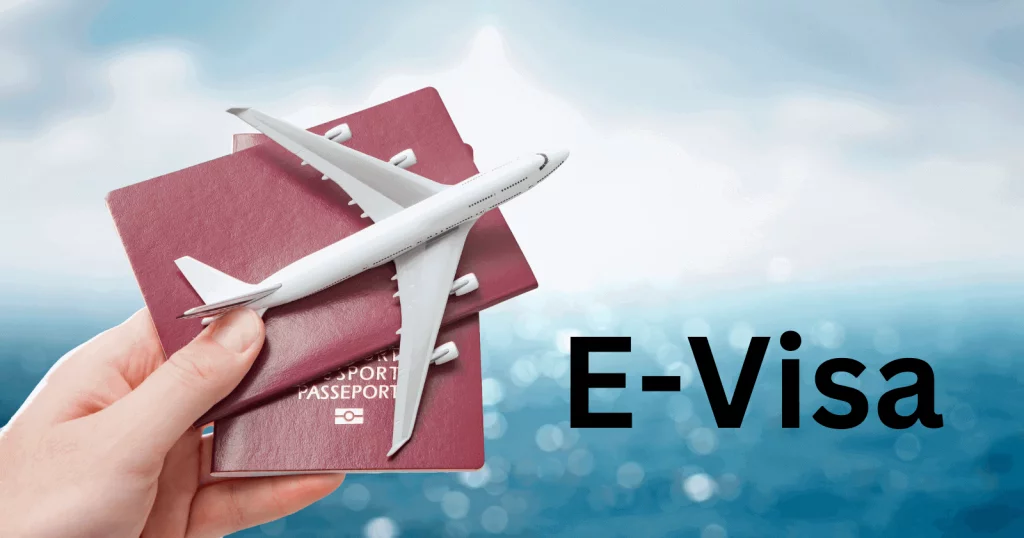Planning a trip to Egypt? Here’s a complete guide on how to get a visa on arrival and explore the different Egypt visa types available for tourists, business travelers, and more.
Traveling to Egypt is a dream for many — from the iconic Pyramids of Giza to the mystique of the Nile River, the country offers unforgettable experiences. But before packing your bags, you need to understand the visa requirements for entry. This guide will cover everything you need to know about the Egypt visa on arrival, as well as the various Egypt visa types depending on your travel purpose.
What Is an Egypt Visa on Arrival?
An Egypt visa on arrival is a convenient option for travelers from certain countries who wish to enter Egypt without obtaining a visa in advance. This visa can be obtained upon arrival at major Egyptian airports, such as Cairo International Airport, and allows short-term stays for tourism purposes.
Who Is Eligible for a Visa on Arrival?
Citizens of over 70 countries are eligible for an Egypt visa on arrival, including travelers from the United States, United Kingdom, European Union nations, Australia, Canada, Japan, and several others. However, the eligibility list may change, so it’s best to check the latest updates from the official Egyptian consulate or embassy before you travel.
How to Get a Visa on Arrival in Egypt
The process of getting a visa on arrival is simple and fast:
- Arrival at the Airport: Upon arrival at an international airport in Egypt, look for the visa-on-arrival counters near the immigration area.
- Payment: Pay the visa fee in cash. The fee is typically $25 USD for a single-entry visa, valid for up to 30 days.
- Visa Sticker: You will receive a visa sticker, which you must place in your passport before proceeding to immigration.
Pros and Cons of Visa on Arrival
Pros:
- No need to apply in advance.
- Simple and quick process at the airport.
Cons:
- Only available at certain airports.
- Must pay in USD (credit cards often not accepted).
- Not suitable for long-term stays or non-tourist purposes.
Egypt Visa Types: Which One Do You Need?
In addition to the visa on arrival, Egypt offers several types of visas depending on the purpose and duration of your stay. Knowing the Egypt visa types available can help you choose the one best suited to your needs.
1. Tourist Visa (Single and Multiple Entry)
This is the most common visa type for leisure travelers.
- Single-Entry Tourist Visa: Valid for 30 days. You can apply in advance at an embassy or obtain it as a visa on arrival.
- Multiple-Entry Tourist Visa: Valid for six months, allowing multiple entries of up to 30 days each. This must be applied for before your trip.
2. eVisa for Egypt
Egypt introduced an electronic visa (eVisa) system to make travel even easier. This is an excellent alternative to the visa on arrival.
- Apply online through the official Egypt eVisa portal.
- Receive your visa via email within 3–7 working days.
- Costs are similar to the visa on arrival.
Benefits of eVisa:
- Avoid queues at the airport.
- Pay using a credit card.
- Available for single or multiple entries.
3. Business Visa
If you’re traveling to Egypt for meetings, conferences, or business deals, you’ll need a business visa. This type is not available on arrival and must be applied for at an Egyptian embassy or consulate.
Required documents include:
- Invitation letter from an Egyptian company.
- Proof of business registration.
- Hotel and flight bookings.
4. Student Visa
For those planning to study in Egypt, a student visa is required. You’ll need:
- Acceptance letter from a recognized Egyptian educational institution.
- Proof of financial means.
- Passport valid for at least six months.
Student visas are usually issued for the duration of the course and must be renewed if your program extends.
5. Work Visa
A work visa is necessary if you plan to take up employment in Egypt. The process is more complex and requires:
- A valid job offer from an Egyptian employer.
- Work permit approval from the Ministry of Manpower.
- Medical clearance and background checks.
Work visas are long-term and involve coordination between the employer and the Egyptian government.
6. Transit Visa
If you’re just passing through Egypt and staying for less than 48 hours, a transit visa may be required, depending on your nationality. If you’re not leaving the airport, a visa might not be necessary at all.
Choosing the Right Visa for Your Trip
Here’s a quick comparison to help you decide:
| Purpose of Visit | Recommended Visa Type | Can Be Obtained on Arrival? |
| Tourism (Short Stay) | Visa on Arrival / eVisa / Tourist Visa | Yes |
| Tourism (Multiple Trips) | Multiple Entry Tourist Visa | No |
| Business | Business Visa | No |
| Study | Student Visa | No |
| Work | Work Visa | No |
| Transit | Transit Visa | Sometimes |
Final Tips Before You Travel
- Always check your eligibility for the Egypt visa on arrival before flying.
- Ensure your passport has at least six months of validity from the date of entry.
- Have exact change in USD if you’re getting a visa on arrival.
- For smoother travel, especially during peak seasons, consider applying for the eVisa in advance.
- If you overstay your visa, you may face fines or delays when leaving the country.
Conclusion
Whether you’re going to explore the ancient wonders of Luxor or dive into the Red Sea at Sharm El Sheikh, understanding the Egypt visa types and knowing whether you qualify for an Egypt visa on arrival is key to a hassle-free trip. For most tourists, the process is simple and accessible, either through the visa on arrival or the convenient eVisa system.


